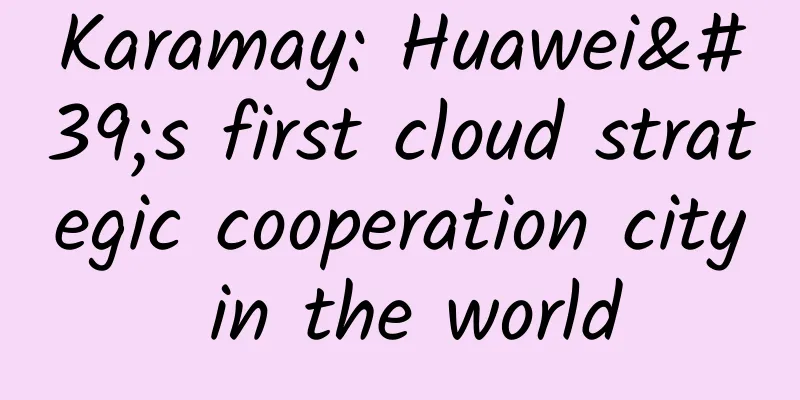The Future of Wi-Fi: Prepare Your Business for the Internet of Things

|
Connectivity is critical to nearly every aspect of our lives. From wearables to security systems to factory automation equipment, the ability to connect, monitor, and control the myriad of connected devices that make up today’s enterprise is essential. So, what is the future of Wi-Fi? The total number of Internet of Things (IoT) devices is expected to exceed 30 billion by 2025 (McKinsey). Enterprises have already begun adapting to this growing demand for connectivity. In less than a decade, the number of enterprises deploying IoT technology has nearly doubled, but the pace of development we have seen in the past cannot be compared to what will happen in the near future. Wi-Fi (a set of 802.11 standards) has become the most popular protocol for wireless local area networks (WLANs). Recent generations of Wi-Fi (Wi-Fi 4, 5, and 6) offer exceptional data rates over short distances, making them ideal for ultra-high-resolution video streaming, virtual reality, and other data-intensive applications. However, these protocols were not designed to cover many of the applications that enterprises currently require from their inventory of IoT devices. In recent years, a new long-range, low-power Wi-Fi protocol has emerged to meet the unique needs of IoT connectivity: the Wi-Fi HaLow (IEEE 802.11ah) standard. The Wi-Fi Alliance’s launch of the new Wi-Fi CERTIFIED HaLow? project on November 2, 2021 was a turning point for the industry. Morse Micro, where I serve as CEO, is one of several vendors working closely with the Wi-Fi Alliance (a global nonprofit that promotes the use of Wi-Fi and certifies Wi-Fi products) to deliver a wireless protocol designed specifically for the needs of the IoT. HaLow, the future of IoT Wi-FiWi-Fi HaLow is a game changer for enterprise IoT applications that require a combination of long range, low power consumption, high data rates, high network capacity, and advanced security. Applications range from factory and building automation to fleet and asset management as well as smart agriculture and smart city infrastructure. Here are some of the key benefits of Wi-Fi HaLow for enterprise connectivity: With a range of approximately 1 km, Wi-Fi HaLow is 10 to 100 times farther than 2.4 GHz Wi-Fi or Bluetooth, making it ideal for warehouses, factories, retail stores, and other large campus environments. Wi-Fi HaLow signals operate in the sub-1 GHz frequency band and can penetrate physical barriers such as walls, floors, and other obstacles more effectively than other higher frequency protocols such as Bluetooth, traditional Wi-Fi, or Zigbee operating at 2.4 GHz. Wi-Fi HaLow reduces the operational cost and complexity of deploying end nodes such as wireless sensors and detectors in locations beyond the range of the 2.4GHz protocol, which would otherwise require range extenders or additional access points (APs). As enterprise applications continue to apply artificial intelligence (AI), machine learning (ML), and big data analytics, there is an increasing need to deploy more sensors to collect more data. Wi-Fi HaLow is more energy efficient than previous Wi-Fi options, enabling multi-year battery life for IoT devices, support for coin cell batteries, and reduced energy consumption. Wi-Fi HaLow is an inherently secure wireless protocol that supports the latest Wi-Fi authentication and encryption requirements, including WPA3 and AES for over-the-air (OTA) traffic. Wi-Fi HaLow is an open 802.11 standard. This simplifies installation and reduces operating costs because no dedicated gateways, controllers or hubs are required. This ensures that 802.11ah technology remains royalty-free, unlike some other proprietary connectivity solutions. How to implement HaLow in your enterprise technology strategyMany enterprises rely on complex mesh networks to connect and control their vast inventory of IoT devices. Wi-Fi HaLow networks have high capacity and wide coverage, eliminating the need to deploy mesh networks. The standard also simplifies enterprise network deployment by reducing security network infrastructure, minimizing installation and maintenance costs, speeding up installation time and reducing maintenance costs. Wi-Fi HaLow should be a key part of any conversation addressing current IoT needs. Most companies undergo frequent information technology (IT) audits, so an easy first step is to add IoT connectivity requirements as an item in your next audit. Chances are, your company's IoT network needs are already extensive and will continue to grow in the coming years. As part of your IT audit, cross-reference your IoT requirements list with the unique benefits of Wi-Fi HaLow. As a protocol designed specifically for IoT, Wi-Fi HaLow may be just as good a solution as a custom one for your enterprise connectivity needs. As you build and refine your IT technology roadmap, develop a plan to integrate Wi-Fi HaLow technology into your network topology and discuss the HaLow certification program with your equipment vendors so that HaLow-enabled devices and networks can be included in your implementation plan. The duration and cost of deploying Wi-Fi HaLow technology in an enterprise network will depend on the current network architecture and other wireless protocols used. Any update or revision will require planning and resource allocation, but Wi-Fi HaLow is expected to be relatively easy to implement. Wi-Fi HaLow was created in part with the goal of simplifying network management by using an easily deployable wireless technology that eliminates the need to rip out existing wiring and lay new cables when devices need to be added or network coverage expanded. Because Wi-Fi HaLow is compatible with existing Wi-Fi protocols (e.g., Wi-Fi 4, 5, and 6), it will not interfere with the radio frequency (RF) performance of any enterprise already using these Wi-Fi protocols. As the inventory of enterprise IoT devices continues to grow, the need for streamlined, easy-to-deploy, and secure connectivity will only rise up your priority list. Wi-Fi HaLow was designed from the ground up with this reality in mind. While technology innovation will continue to accelerate, no wireless protocol currently matches the unique combination of energy efficiency, extended range, network capacity, advanced security, Wi-Fi compatibility, and native IP support that Wi-Fi HaLow offers—it’s the future of Wi-Fi. |
>>: Report: Global 5G RAN market shows strong growth
Recommend
If IT operations and maintenance fail to do this, congratulations, you will be blamed for this.
When it comes to IT operations and maintenance, m...
5G package users exceed 200 million, 5G mobile phones are accelerating into the popularization period
Recently, China Mobile, China Telecom and China U...
After reading the long connection in HTTP protocol, most programmers collected it...
What is a long connection? Long connection or sho...
Affecting 6,000 companies, Hannover Industrial Fair was cancelled for the first time in 73 years! But the development of industrial Internet will still accelerate
No matter how important an activity is, it seems ...
5G, IoT, edge and cloud: a winning combination
The number of 5G connections is expected to grow ...
RAKsmart: US VPS monthly payment starts from $0.99, 4G memory cloud server starts from $4.99/month
RAKsmart has launched a new promotion in October,...
ServerHost: $1/month KVM-1GB/15GB/1Gbps unlimited traffic/8 computer rooms available
Today's topic is $1 VPS, and here's the i...
SRv6—A killer for 5G technology implementation
The development of 5G services has put forward hi...
EPM business-finance integration is gaining popularity. How does FONE break through the boundaries of financial digitalization?
Traditional financial services are no longer the ...
Detailed explanation: How did China Mobile perform in 2020?
[[390976]] Compared with China Telecom and China ...
SoftShellWeb: $3.5/month KVM-1GB/15GB/2TB/San Jose & Netherlands Data Center
SoftShellWeb recently launched several VPS monthl...
The draft number portability management method is released: users must meet five conditions at the same time
[[272520]] When users apply for number portabilit...
my country will open 1.4 million 5G base stations by the end of the year
This year is a period of large-scale 5G construct...
ZJI: Hong Kong server Alibaba dual-line order discount -350 yuan, Hong Kong high defense discount -1500 yuan
ZJI has released promotional offers for December ...









